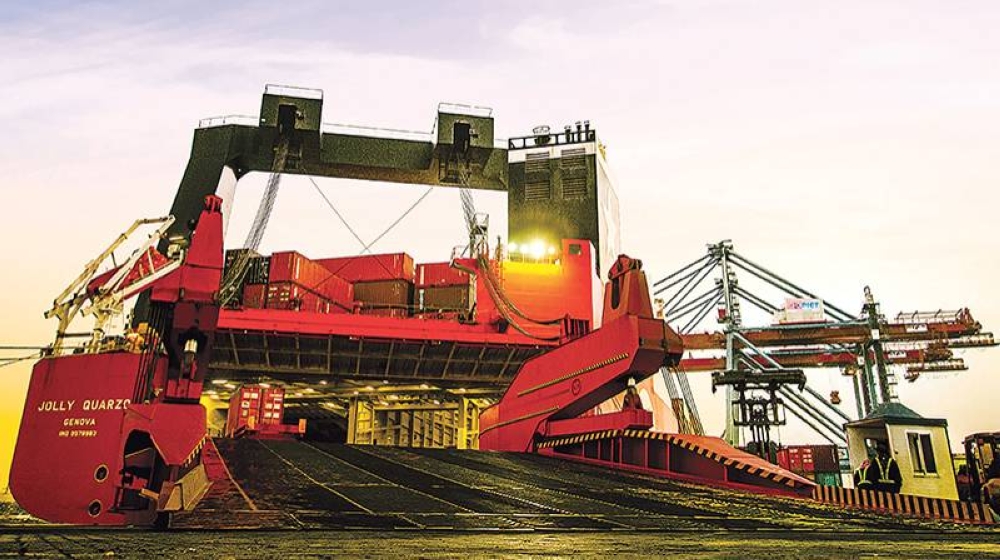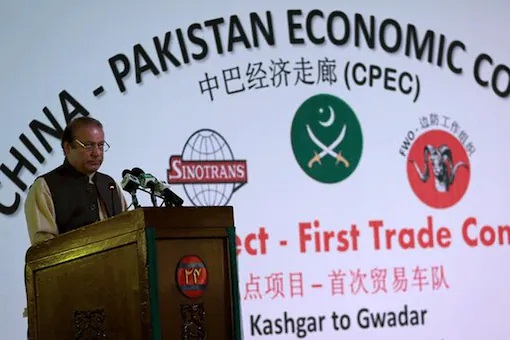Much has been written about how the China-Pakistan Economic Corridor (CPEC) project will turn Pakistan’s fortunes around merely by being a transit for raw materials and energy resources to western China. There is the notion that Gwadar will become a ‘new Dubai’, a glimmering El Dorado on the shores of the Arabian Sea and the source of untold riches. Indeed, many pictures of a supposed future Gwadar are actually of Hong Kong, the epitome of modernity with its iconic towering skyscrapers. However, what is required is a ‘new Rotterdam’, a vast container port stretching out endlessly into the desert with the purpose of getting goods in and out of the country. Gwadar should therefore be considered more of a gateway to landlocked Asia due to the CPEC available to also serve the Central Asian states via Afghanistan. These states could be encouraged to use Gwadar by offering an area of the container storage facility for their exclusive use if they in return use Pakistan National Shipping Corporation (PNSC) vessels for transport. While containerisation is the hallmark of maritime trade today, there is still scope for further opportunities for Pakistan (and others) to expedite exports, (especially to the Arabian Peninsula) by establishing a cargo ferry service. Combined road/sea transportation could be considerably cheaper than air freight for some foodstuffs for example that could travel via Gwadar, embarking on a ferry to a peninsula port for onward travel via its road network, while facilitating Middle Eastern trade with Pakistan, China and Central Asia in reverse. There would also be further opportunities for Pakistan to exploit if such a ferry service was established. It would also provide Pakistan with a strategic sealift capability through the use of these vessels as naval auxiliaries to be chartered or requisitioned in times of crisis, such as environmental/ humanitarian/disaster relief operations, support of regional UN missions, and military support to regional allies.
No opportunity to expand the opportunities brought by the CPEC project should be overlooked, which is why the operation of such a ferry service should be carefully considered. In terms of the secondary use of such vessels that need is very clear. Pakistan is a responsible state that desires regional peace and stability, and has a stake in supporting this throughout the Indian Ocean Region (IOR) and beyond. Consequently it has been the largest contributor of peacekeeping troops to the UN for some years and has participated in some important regional missions, such as those in Somalia and other African states. In terms of international disaster relief operations in the region it has always stood ready to help when the need arose, and perhaps the most high profile of these missions was in the aftermath of the 2004 Asian tsunami that devastated parts of Indonesia, Sri Lanka, and the Maldives plus affecting other IOR littoral states. Pakistan’s navy was the first to respond due to the frigate Tipu Sultan and replenishment vessel Nasr being in the Maldives port of Male at the time the tsunami struck, and both vessels immediately began relief operations. The navy quickly responded to the wider disaster by sending more ships and elements of the Marine Expeditionary Force to Sri Lanka and Indonesia to participate in the international relief efforts. More recently the navy’s F-22P frigates Aslat and Shamsheer helped evacuate hundreds of Pakistani and foreign nationals from Yemen in the aftermath of the Saudi-led intervention against the Houthi rebels in spring 2015. These missions could have benefitted from a strategic sealift capability.
The type of vessel needed to be able to fulfill this dual role is very specific as it would demand a roll on/roll off (RoRo) type ship able to directly embark/disembark vehicles. Trucks could simply be driven on at Gwadar and driven off at their destination, which would offer a far quicker turnaround time than sending freight via containership (that would require timely loading/ unloading as well as processing at each end of the journey). When operated by the navy in support of its operations, both tracked and wheeled armoured vehicles could be directly embarked/disembarked using the quayside as long as port facilities were available. For disaster relief operations these could even include Marines’ hovercraft for ease of movement, and Army engineering vehicles to clear away damage and begin the process of rebuilding local communications and health infrastructure, or at least aid in providing temporary shelter. The RoRo vessels would therefore be operated as a combined asset for the whole military, not just the navy. Presently however PNSC only operates a fleet of four tankers and five bulk carriers. It has not operated passenger vessels for very many years, and does not seem to have ever operated anything like a sea-going RoRo vessel. However, PNSC is expanding and has experienced an impressive turn around in its fortunes since 2001. There should be no reason that additional services should not be considered as part of PNSC’s ongoing expansion so Pakistan can take its place as a great maritime trading nation.

As for the design of the vessel itself, it would have to be sufficiently dual use to ensure a minimum or no undue extra preparation is required if needed for emergencies or sealift mission. Such a design, and its use for this purpose, already exists, the British Point Class military sealift vessels, a modified RoRo 4100 design, that is usually operated for civilian purposes, but available for military use when required. Four of the six ships originally built under the contract were constructed by German shipbuilder Flensberger, which has also built three RoRo 4100 ships (with slight variations) for Turkish use as the Ulusoy-14 plus further units of a similar design. The RoRo 4100 features a larger stern ramp that allows vehicles to be driven straight onboard. A smaller second deck accessed by internal ramp increases the number of vehicles able to be carried, and up to four helicopters may also be transported. Unlike large passenger ferries that have multiple decks and cabins the RoRo 4100, and indeed other RoRo designs offered by Flensberger, are relatively compact due to nearly all available space being dedicated to transportation of vehicles. The Point Class vessels or similar would therefore be ideal for Pakistan’s requirements. They are 193m long, have a 26m beam, and a displacement of 23,000 tonnes at full load. They have a carrying capacity of 14,200 dead weight tonnes (DWT), which equates to 2,650m linear metres of space for vehicles. This could comprise of 130 armoured vehicles and 60 trucks as well as additional supplies. They also have a top speed of 21.5 knots and a range of 9,200 nautical miles/17,000km at this speed, meaning they can range over considerable distances at a fair speed, which would be vital in an emergency situation where they would also have to maintain speed with other navy ships. In terms of their performance and carrying capacity therefore such vessels would provide a quantum leap in Pakistan’s capabilities to aid regional stabilisation efforts as well as more effectively and speedily respond to relief operations.
Such vessels could also be constructed domestically. The facilities at Karachi Shipyard and Engineering Works (KSEW) require modernisation despite the recent construction of the Turkish design Fleet Replenishment Tanker. The yard has not been able to take advantage of the modernisation of the PNSC fleet that has taken place in recent years either due to its limited construction facilities. PNSC operates ships ranging in displacement from 17,018 to 58,118 tonnes (gross tonnage), and lengths of 169.37m to 246.8m, but none of these ships, even the smaller bulk carriers, were built domestically. All PNSC vessels were built in Japan between 2002 and 2009 and generally were acquired from previous owners. The smaller of the bulk carriers could have been constructed domestically at KSEW’s existing facilities as its construction Berth 3 has a capacity of 26,000 DWT, length of 213, and width of 31m. However, this opportunity passed, but the berth and associated construction infrastructure are likely sufficient to build a RoRo 4100 type vessel under a transfer of technology agreement with Flensberger, (though KSEW may require larger drydock facilities to service such a ship). Three such vessels would probably be sufficient to allow at least one to be available for sealift missions, though the number would really depend on the level of trade that could be generated to keep them in service during periods when they are not required for naval use.
However, a RoRo ship is not an amphibious assault vessel such as a Landing Platform Dock, and should not be mistaken for one, as it lacks the ability to directly land troops and supplies onto a beach unless large air cushion vehicles (hovercraft) could also be embarked. The suggestion is not that these vessels be used in this manner. However, there may still be scope to land vehicles ashore in case port facilities are unavailable due to being damaged in a natural disaster. The possible use of a mexeflote (or similar) would allow for embarked vehicles to be transported ashore. A mexeflote is a powered landing raft that can transfer vehicles to land, or when joined together may form a temporary pontoon or causeway/jetty to allow vehicles to be driven directly ashore. They have been used with great success in disaster relief operations. The individual sections are compatible with ISO shipping container dimensions to facilitate handling and transport so there would be little difficulty in their use.
In support of economic advancement, plus Pakistan’s desire to preserve regional peace and stability therefore, serious consideration should be given to the above possible uses of RoRo type vessels.




